9 Great Movies Where a Older Man Falls in Love With a Much Younger Woman (2022) – If you look closely, you’ll notice that about half of the romance films made in Hollywood and abroad are about older men and younger women. However, most of those films do not properly qualify for this list since, while there may be a significant age difference between the actors, the characters are assumed to be considerably younger. For example, in every film starring Tom Cruise, his love interest is usually played by a young man in his twenties. He is in his fifties. However, in films, he always plays characters in their thirties (okay, on rare occasions, 40-something).
This list focuses on films in which the age gap is addressed. Movies portraying older women and young men in relationships are unusual, but when they are made, directors don’t have to worry about looking like perverts. However, older man-younger woman relationship films require extra attention because the picture — and the filmmaker — can rapidly be labelled as weird and predatory if the storey is not handled properly. That is why there have been so few good films created on the subject. The following is a list of the best movies about older man-younger lady couples.
Guinevere (1999)
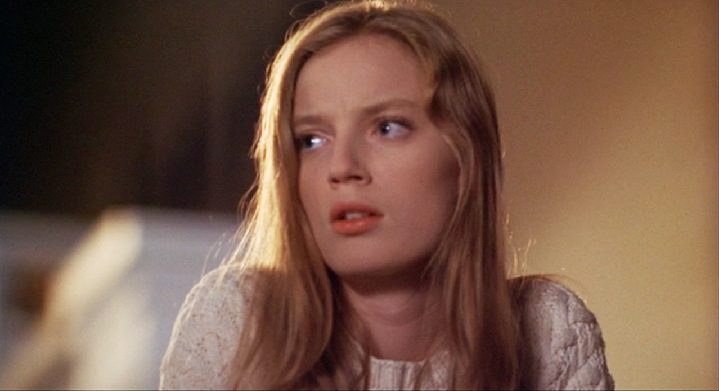
‘Guinevere’ is a forced-romance film about a melodramatic connection between a 50-year-old Casanova photographer and a 20-something misfit who becomes the photographer’s protégé in her quest for male attention. ‘Guinevere’ depicts the likelihood of young girls succumbing to the charm and affection of charismatic older ladies, yet filmmaker Audrey Wells’ visual direction elevates the film to a watchable level. ‘Guinevere’ follows heroine Harper Sloane (Sarah Polley) and Connie Fitzpatrick’s odd and forced romance (Stephen Rea). Why be compelled?
Connie is portrayed throughout the film as a man who can’t be trusted, with his instincts and intentions uncertain; nonetheless, Harper’s affection and love for him pushes her to stay with him until she is confronted with his genuine personality and the realities of his past relationships. The film, on the other hand, loses control of its intensity and aspects of surprise as it adopts predictable terminology, followed by a badly and ambiguously shot finish and climax (a result of a possible tight schedule and budget). Though Wells’ direction and Polley’s acting are wonderful contributions to the picture, the underdevelopment of supporting characters (particularly Harper’s mother), the loose architecture of the tale, and a lacklustre finale limit the film’s potential.
Noce Blanche (1989)
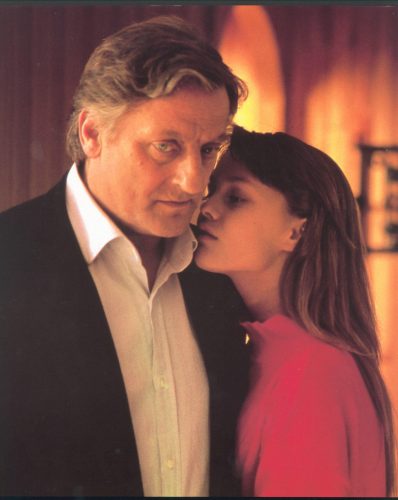
‘Noce Blanche,’ nominated for three Cesar Awards, is a French-language film about the attraction, affection, and romance between a man and a much younger girl, which takes a pessimistic turn as their love for each other increases, crossing societal trends and obligations. ‘Noce Blanche’ is the storey of Mathilde, a 17-year-old girl whose loneliness as a result of her father’s absence and her suicidal mother drives her to an exploitative state, leading her to fall for a married man in his later years. As his presence begins to heal her loneliness and isolation, her lack of rationality and sensibility causes her to become obsessed with her newly discovered love, resulting in the loss of many lives and relationships.
‘Noce Blanche’ is a film about an old man and a younger woman’s relationship that follows a morally dubious storyline, demonstrating how disgusting uncontrollable cravings, seclusion, and stubbornness can be to the human mind. Despite being the main protagonists, Vanessa Paradis plays Mathilde, who is not the focus of the film. Her big moments show her in a condition of misery, rage, and worry, limiting her acting and gestures. However, star actor Bruno Cremer delivers an amazing performance as Francois, an intelligent man trapped in a spell of seductive kindness.
The Humbling (2015)
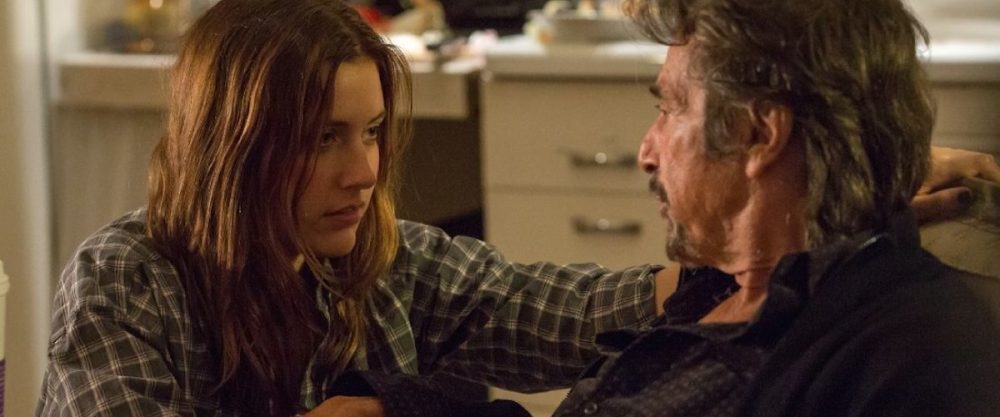
An elderly actor attempting to resurrect his career enters into a relationship with his ex-young girlfriend’s daughter, which turns his life upside down. ‘The Humbling’ is one of the most notable films in actor Al Pacino’s later career. Pacino plays Simon Axler, a damaged and forgotten actor attempting to reclaim his name among the public through Broadway, but his stage nervousness and dread of self-presentation prevent him from succeeding. When confronted with the horrors of his history, Axler finds a wonderful ally in his “goddaughter,” Peegen. The film then centres around these two characters’ lives, which take an unforeseen turn as they embark on an unexpected relationship. The ending, situated on a Broadway stage, provides the audience with an ordinary but stunning finish to the storey.
‘The Humbling,’ while not a popular picture, merits praise for its fresh perspective on a love storey. After a string of missteps, ‘The Humbling’ is a decent rebirth of Al Pacino’s career, who had been looking for a way to re-enter the world. ‘The Humbling,’ while not a hit, deserves to be seen.
My First Mister (2001)
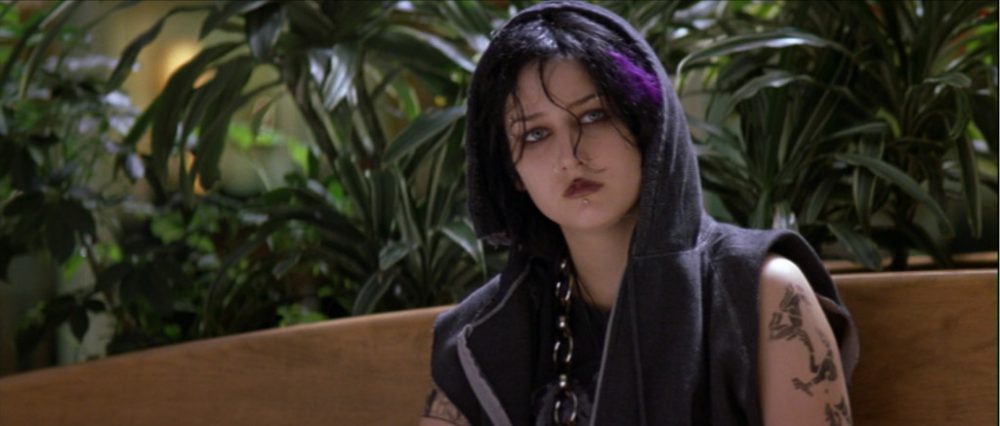
‘My First Mister’ tells the narrative of a troubled teen Jennifer, a gothic-styled girl attempting to live by society’s conventions. Randall Harris, the proprietor of a clothes company, offers her a job after she graduates. As she struggles to adjust to her new world, she finds solace in the words of wisdom and experience of a much more mature and realistic Randall, with whom she forms an unexpected bond.
The answer to why ‘My First Mister’ appears on the list is that the old man-younger woman relationship in this film is a bond of friendship rather than love. Albert Brooks (well known for his later role in Drive) plays Randall Brooks, a divorcee living a secluded and repetitive life, and Leelee Sobieski plays Jennifer, a teen searching for answers in life. The film is worth seeing since it focuses on many teenage complications and beautifully illustrates the human desire and necessities of reaching out to a friend or a person who cares to understand what life is about, in this case, what life has in store for one. Of all the love pairings portrayed on film, this one is the most appealing, nicest, and heartfelt.
Blue Car (2002)
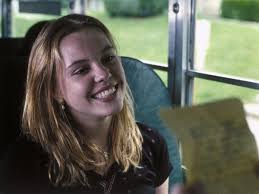
Hollywood is recognised for producing pictures that provide a fascinating outcome from the most basic and uncomplicated themes. ‘Blue Car,’ despite its shortcomings, manages to captivate audiences with its intriguing characters and the dramatic performances of the actors who play them. ‘Blue Car’ tells the narrative of Meg, a young adolescent who is clumsily and uncomfortably attracted to her English teacher because to their shared interest and enthusiasm for writing. The film follows this teacher-student relationship as Meg prepares for a poetry competition, which abruptly ends on a completely unexpected node, offering an unanticipated twist in the final plot.
The picture maintains a strong A+ throughout its running period, reaching new heights of precision and realism in the last scenes. David Strathairn and Agnes Bruckner, among others, deliver superb performances to keep the film together. ‘Blue Car,’ despite its debut director, is one of the few films that pays so much attention to detail and background study, which has created this film, despite its shortcomings and quibbles, a spectacular cinematic experience.
An Awfully Big Adventure (1995)
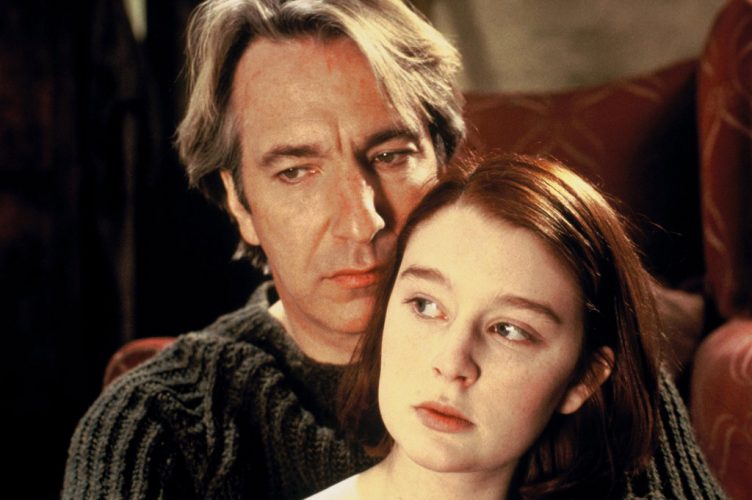
Despite not being a romantic film, ‘An Awfully Big Adventure’ is a perplexing narrative about a young girl named Stella Bradshaw who falls for a man much older than her while trying to satisfy her sexual wants and desires through other ways. Hugh Grant plays Meredith Potter, the gay and sadistic director of the theatre group Stella works for, as well as Stella’s 16-year-old love interest. Alan Rickman plays O’Hara, a forties-era actor who falls for Stella but is subsequently used by her for sexual purposes. As the novel progresses, Stella’s connection with the two men begins to deteriorate due to Stella’s biassed admiration for Meredith despite his actions and O’Hara’s great concern for her well-being.
The plot revolves around a complicated romantic triangle between the three protagonists, with the girl being a teenager and the men being much older than her. Though the picture had a mixed reaction from critics, the presence of stars such as Alan Rickman and Hugh Grant made it an intriguing experience. The film is not a romantic folklore masquerading as a British sadistic tale, but rather a sad and unpleasant theatrical loaded with dark character components and a jaw-dropping, but dissolute and undesirable ending. “An Awfully Big Adventure,” based on Beryl Bainbridge’s novel of the same name, is a dark metaphorical tale that is admirable for its eccentricity combined with a sensitive writing and outstanding performances.
Great Balls of Fire! (1989)
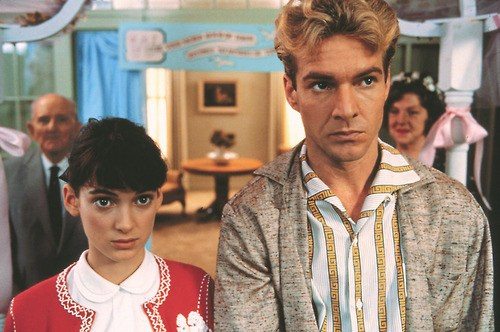
This is an excellent biographical picture detailing the life of rock and roll musician Jerry Lee Lewis, with Dennis Quaid giving a brilliant performance as this historical music hero of the 1950s. In the midst of his wild and electrical career, it is his marriage to his 13-year-old cousin that introduces the “Lolita Complex,” a very contentious occurrence that nearly led to his extinction from the musical scene. Known for his undeniable musical genius and exuberant originality, this film also depicts the darker and arrogant elements of his personality, as well as his alcoholism, providing a broad and varied glimpse into the life and thoughts of this piano maestro.
The Girl in the Café (2005)
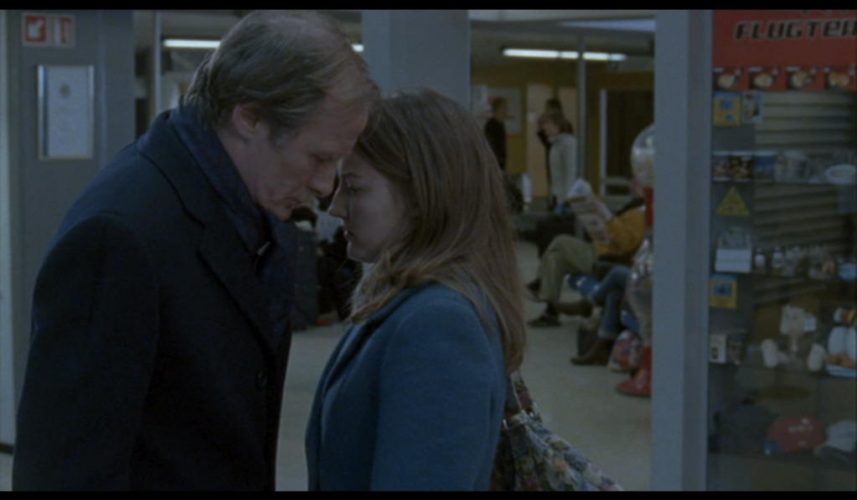
A lonely and alone employee of Her Majesty’s Treasury working under the Chancellor of Exchequer meets an enigmatic lady much younger than him. As the events of the film unfold, their unexpected interaction blossoms into a greater bond as they strive to reconcile their differing perspectives on the world.
‘The Girl in the Café’ is a romance/social film that attempts to expose third-world difficulties and the neglect of nations such as the United Kingdom towards the suffering populations of these nations, as well as their failure to aid them in the name of humanity. The best element of the film is that it never deviates from its romantic plot because these difficulties are not visualised but discussed in conversation, thereby keeping the characters’ separate plots intact. The unstructured scripting, on the other hand, struggles between the humanising message and the awkward relationship between Laurence (Bill Nighy) and Gina (Kelly Macdonald).
The popularity of the film can be attributed to Macdonald’s performance, which garnered her an Emmy for Best Actress in a Limited Series or Television Movie. ‘The Girl in the Café,’ winner of Outstanding TV Movie at the Emmys, is a delightful romance in which an old man’s conscience is questioned by his younger female counterpart, providing a nice conclusion.
Frank & Lola (2016)
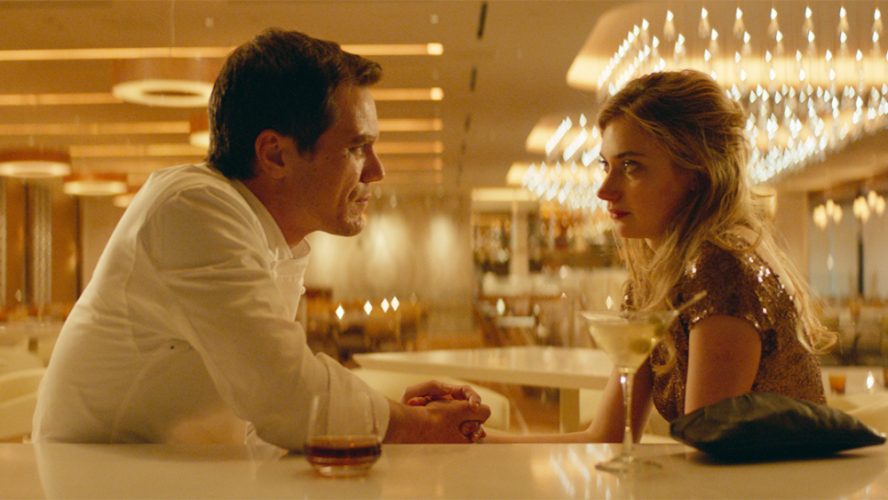
‘Frank & Lola,’ a noir, dark, and funny psychological romance, is a magnificent picture of his infatuation and jealously for the woman of his life. ‘Frank & Lola,’ a gripping sexual thriller intoxicated with violence, seduction, and sex, is about Frank, an obsessively possessive and obsessed chef in Las Vegas, and Lola, a newcomer in town who happens to cross paths with Frank. The plot then takes many twists and turns as the enigmatic young woman’s secret is gradually disclosed, eventually forcing Frank into a series of bouts of trauma prompted by a psychological compulsion.
‘Frank and Lola’ finds a brilliant star in Michael Shannon, who vividly exhibits the various incarnations of Frank’s character, which progresses in the series from loving to violent, compulsive, possessive, and, eventually, shattered and lonely. Imogen Poots, who outperforms many other actresses in terms of acting credibility and talent, backs him up. Furthermore, high appreciation for filmmaker Matthew Ross, who effectively sustains a hit directorial debut by delving further into the audience’ keen remarks.
Circle of Two (1981)
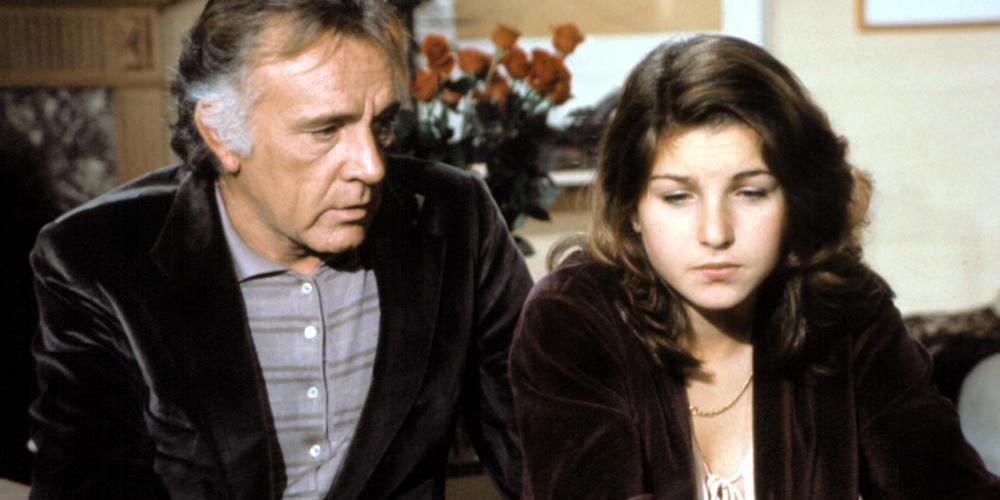
This Canadian drama extends out the age gap the most of any film on this list. This time, at the age of 60, a fragile 16-year-old girl who writes poems falls in love and begins an innocent yet extremely emotional relationship with an older painter. It’s a long and realistic depiction of such an uncertain and doubtful circumstance, but it provides us a good look into each individual, making them quite likeable and true. This dramatic storey takes on the controversial “Lolita Complex” and brings it into an everyday type of environment, where things might not even seem that difficult to accept when love is at the core of the characters’ actions, with Richard Burton playing the painter and Tatum O’Neal playing teenage Sarah Norton.
Quills (2000)
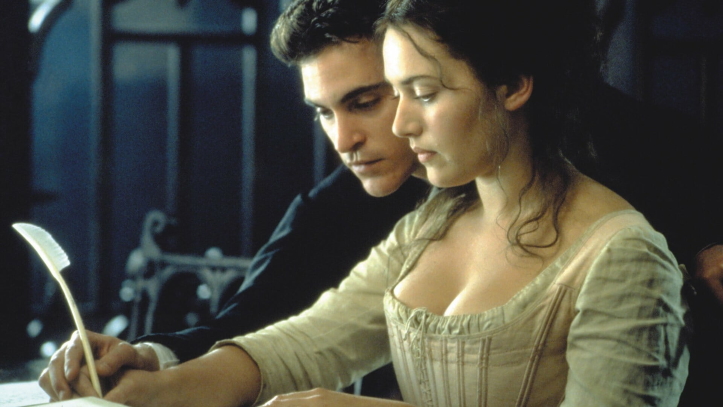
‘Quills,’ a critical smash, is a semi-fictionalized biography of French philosopher and writer Marquis de Sade, who was famed for his hedonist sexual lifestyle, which inspired many of his erotic writings but also led to years of arrest and imprisonment. The film shows his later years in a French asylum, as he struggles and tries to overcome the forced therapy for his ‘insanity,’ as well as his sexual obsession and unwelcome approaches against young ladies. In the middle of this novel about Sade and his psychological state, the young laundress Madeleine admires Sade’s art and is drawn to him out of love. The romance between Madeleine (Kate Winslet) and Sade (Geoffrey Rush) garnered a lot of attention from film reviewers and audiences, while being a tiny component of a much larger plot. Though condemned, the film’s depiction of nudity and sexual violence added to the realism in Philip Kauffman’s direction.
Aside from Kauffman’s direction, ‘Quills’ was Rush’s best performance to date, aside from the equally hypnotic character of Hector Barbosa in ‘Pirates of the Caribbean.’ While Rush was at his best, Winslet followed up her Academy Award-winning performance in ‘Titanic’ with another touch of perfection in ‘Quills’ (1997). Joaquin Phoenix, who plays du Coulmier, the director of the asylum that houses Sade, joins this colourful cast. du Coulmier is a fascinating man who is torn between his responsibilities and his faith in Sade and his words. ‘Quills,’ which is also supported by a vast cast, is a sophisticated and terrifyingly superb historical drama.
An Education (2009)
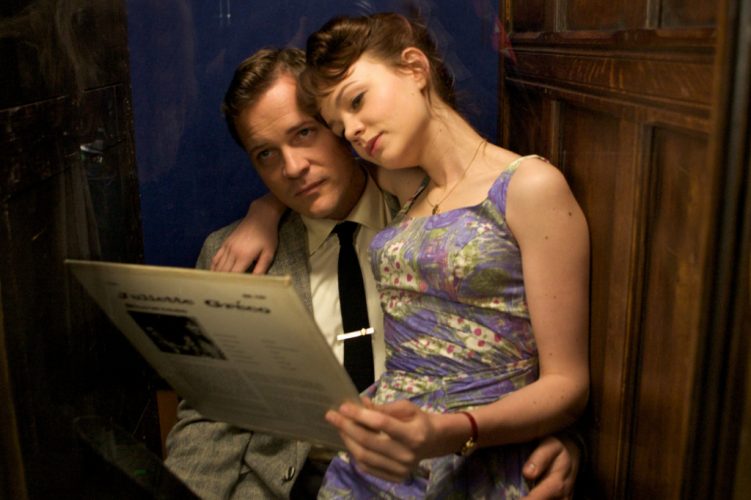
This is a film set in Britain’s sophisticated, strict, and structured culture and lifestyle, in which a teen’s desire to live a life of luxury, independence, and free will leads her to cross paths with a man much older than him, which turns out to be a life lesson for her, providing her with a true education in life. Jenny, a dreamy youngster, has a unique encounter with David, a lovely Englishman, which takes her life down a path of addicting love and passion, driving her to lose her sense of truth, reality, and the concern of her loved ones for her.
‘An Education,’ a Best Picture nominee at the Oscars that year, is best known for lead actress Carey Mulligan’s outstanding performance, which passes with a fantastic charm, decency, and perfection in her acting, overshadowing the other forgettable performances, including that of actor Peter Sarsgaard. Carey Mulligan portrays the teen protagonist incredibly well and flawlessly performs the shifts in the characters’ ideas and personalities as she learns step by step throughout the film.
‘An Education,’ which stars an ensemble that includes Dominic Cooper, Rosamund Pike, and Alfred Molina, is also noted for its quite exact and abundant setting of the 1960s British-era, as well as its setting of London city per the places of that period. Despite three Academy Award nominations and a critically acclaimed performance by Carey Mulligan, ‘An Education’ remains underappreciated and was a box-office flop.
Palo Alto (2013)
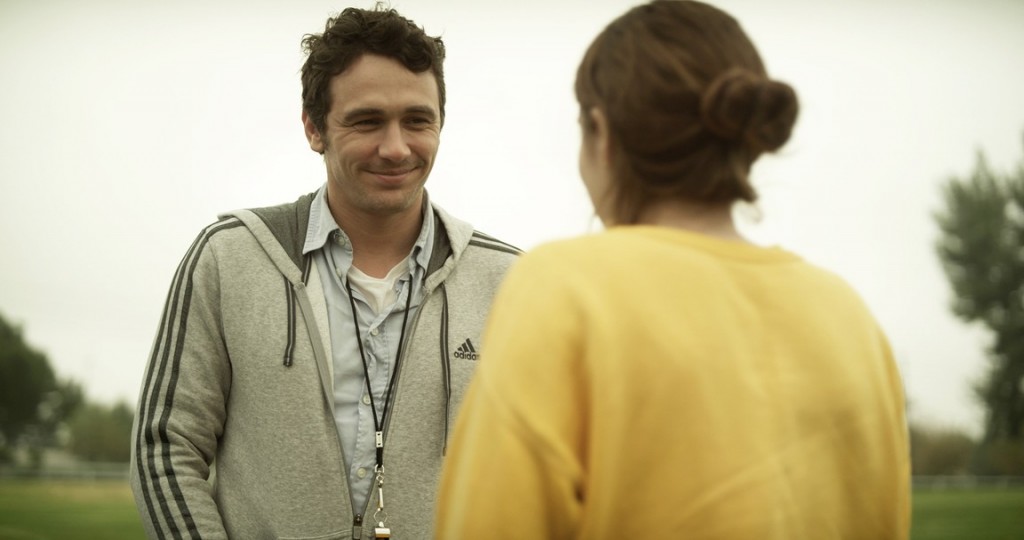
This was Gia Coppola’s (granddaughter of Francis Ford Coppola) feature film debut, which stars Emma Roberts and James Franco among others. April (Roberts) and her soccer coach Mr. B (Franco) become involved in a more intimate relationship than the typical student-teacher correlative approach should be in the midst of the adolescent life and ambitions of a young group of teenagers. A well-constructed and drifting tale, with well-defined characters seen from a dreamy and reckless atmosphere produced by brilliantly stylized cinematography, achieves an open retrospective into Palo Alto’s diverse souls.
As Good As it Gets (1997)
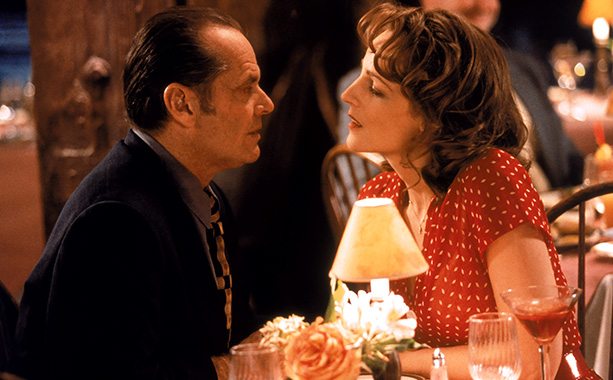
For the legendary Jack Nicholson, age is just a number. The man embodies charisma and exudes sophistication in every shot he’s in. He was 60 when he performed this picture, yet there was no awkwardness here, even though he was dating a 34-year-old Helen Hunt in the film. That is the essence of flamboyance and charisma. ‘As Good as it Gets’ is a nice little romantic comedy about a misanthropic, irritating, obsessive-compulsive writer, played by Nicholson, who has to look after his neighbor’s dog. He falls in love with a waitress who is nearly half his age and a single mother with a chronically ill son. The film establishes the people and their interactions beautifully, taking its time to construct the plot. It’s a fantastic film with excellent performances by Nicholson and Hunt, both of whom received Academy Awards for Best Actor and Best Actress.
Last Tango in Paris (1972)
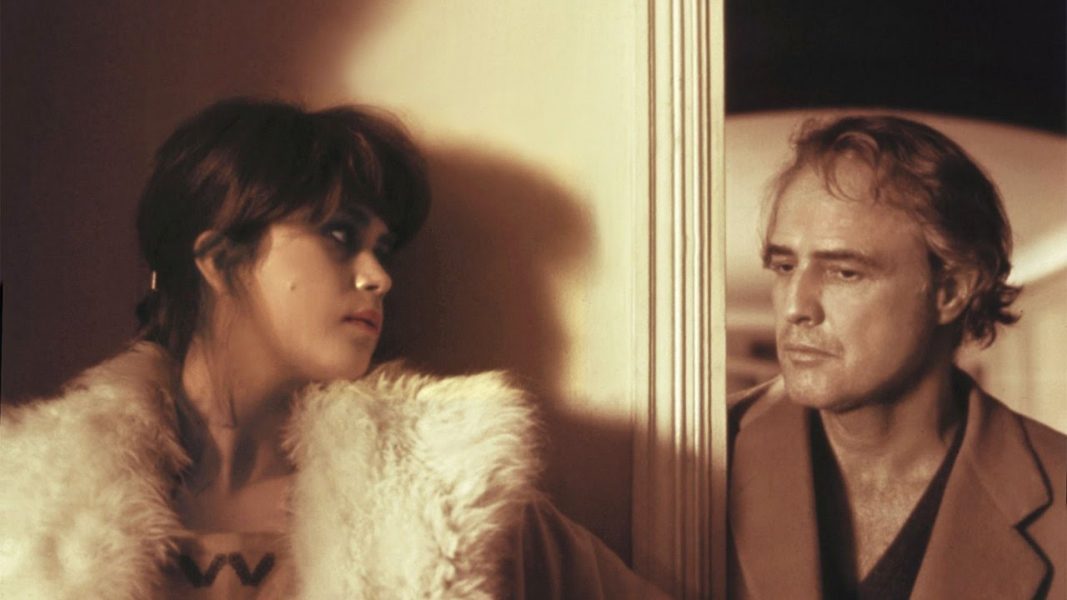
The magnum work of Bernardo Bertolucci is one of the most divisive films ever created. The storey revolves around a man who is grieving the death of his wife and has an anonymous sexual relationship with a much younger woman. The film is a wonderfully freeing work of pure sexual cinema that melts you with its gorgeously agonising portrayal of the human predicament. It’s beyond words how emotionally raw, dark, and devastating it is. Marlon Brando delivers one of the finest acting performances of all time in the picture.
Lolita (1962)
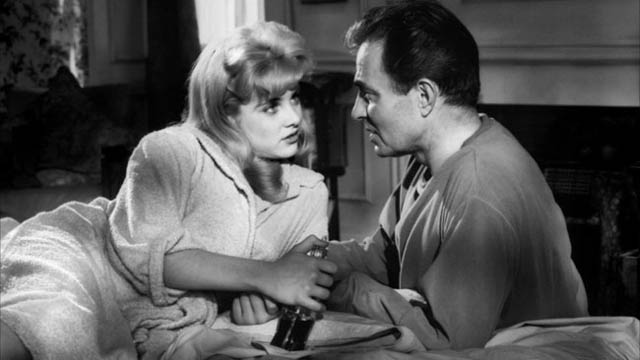
The movie banner asks, “How could they ever make a movie about Lolita?” I don’t think there’s anything Stanley Kubrick wouldn’t produce if he felt it was necessary. That’s exactly what happened with this 1962 adaptation of the famed “Lolita” storey, starring James Mason and Sue Lyon as the two squabbling “lovers.” It concentrates primarily on Humber Humbert’s obsession with the lovely and young 14-year-old provocative teenager, from whom he is passionately unable to remove himself. Although it omits most of the book’s provocation, it was nevertheless regarded as a very contentious film due to the subject in general being taboo and immoral in the public’s perspective. However, it was a huge commercial success and has since cemented its place in cinema history.
Manhattan (1979)
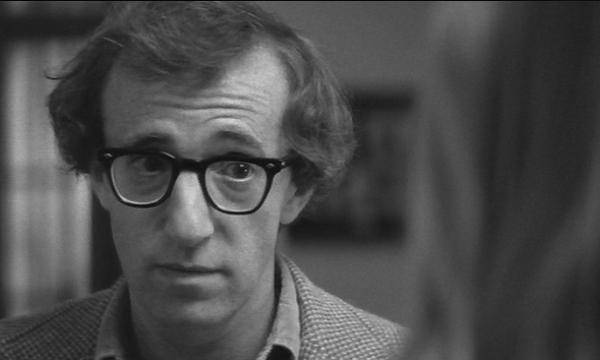
‘Manhattan,’ a film by Woody Allen, transformed my perspective and impressions of human interactions and the lovely absurdities of human nature. This, like any other Woody Allen picture, is much more than a pleasant little romantic comedy. The plot revolves around Allen’s character, Issac, a divorced New Yorker in a romance with Tracy, a high school girl. The trouble is that Issac feels himself far too mature to be in a relationship with this tiny girl, so he falls in love with a lady his own age, his best friend’s mistress. But things don’t work out, and Issac quickly understands that Tracy was his genuine love, and that she adored him despite his arrogance and selfishness. But perhaps life is just a neatly packaged box of squandered opportunities, and it is this awareness that makes ‘Manhattan’ so profoundly moving.
Three Colors: Red (1994)
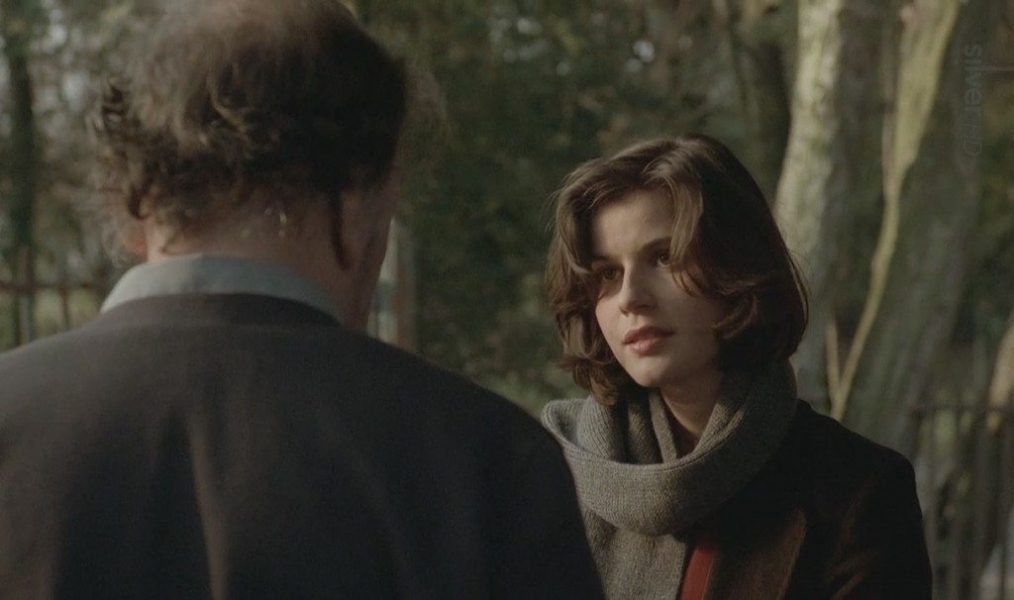
Something incredibly amazing about the way Kieslowski just hits you on an emotional level. ‘Red’ was my first Kieslowski film, and I was blown away by its beauty. The film explores the interaction between a young woman and a cynical elderly judge who listens in on people’s talks to spy on them. Their worlds appear to be radically different at first, yet there is something connecting them that will later evolve into a truly intimate friendship. Their relationship isn’t explicitly romantic, but you get the impression that they could be lovers, and Kieslowski hints at this in many scenes, most notably in that beautiful scene where Jean-Louis Trintignant’s character says goodbye to Valentine and they both place their hands on the car window before he drives away. It’s a simple moment, yet it conveys a lot about the intimacy of their connection.
Lost in Translation (2003)
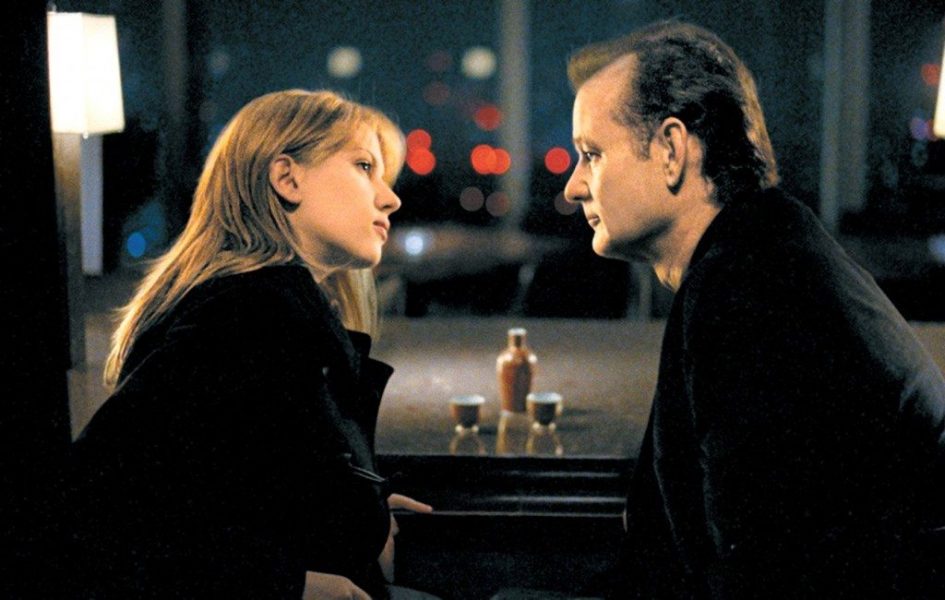
‘Lost in Translation’ is a charmingly melancholy storey about love, loneliness, and boredom. The storey follows the romance of a middle-aged American actor and a considerably younger American woman who meet in a Tokyo hotel. They appear to be adrift in a world and culture that are foreign to them, and despite their age gap, they begin to discover themselves in one other. These are two souls stuck at very different stages of life, but they appear to have some type of connection. Their connection appears platonic, but it has an ambiguous tone, and we’ll never know what Bob whispered in Charlotte’s ear, which is perhaps the joy of life. The enchantment of the unknown.